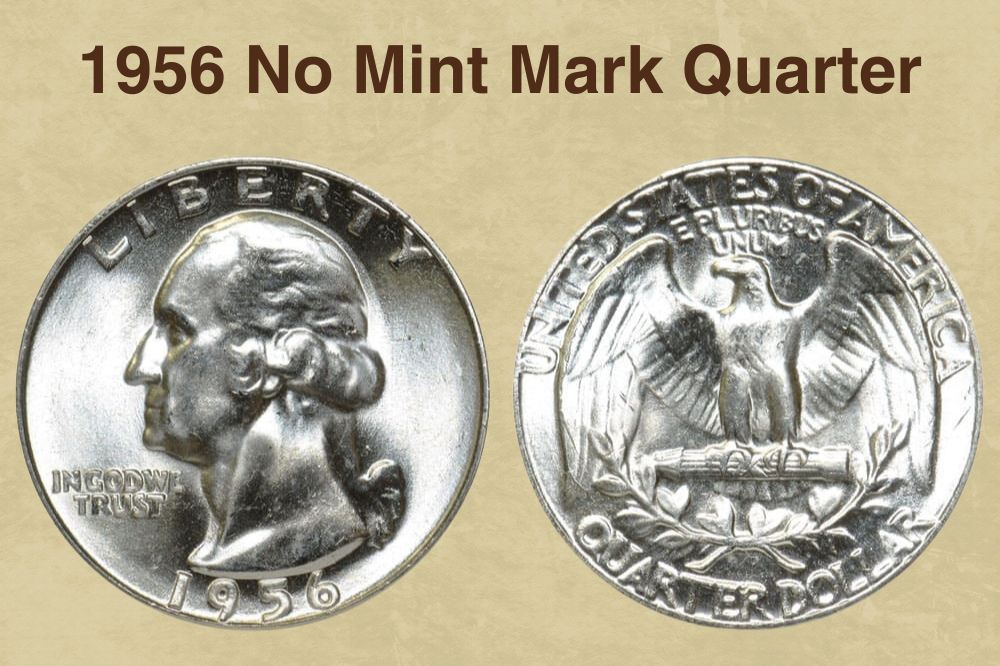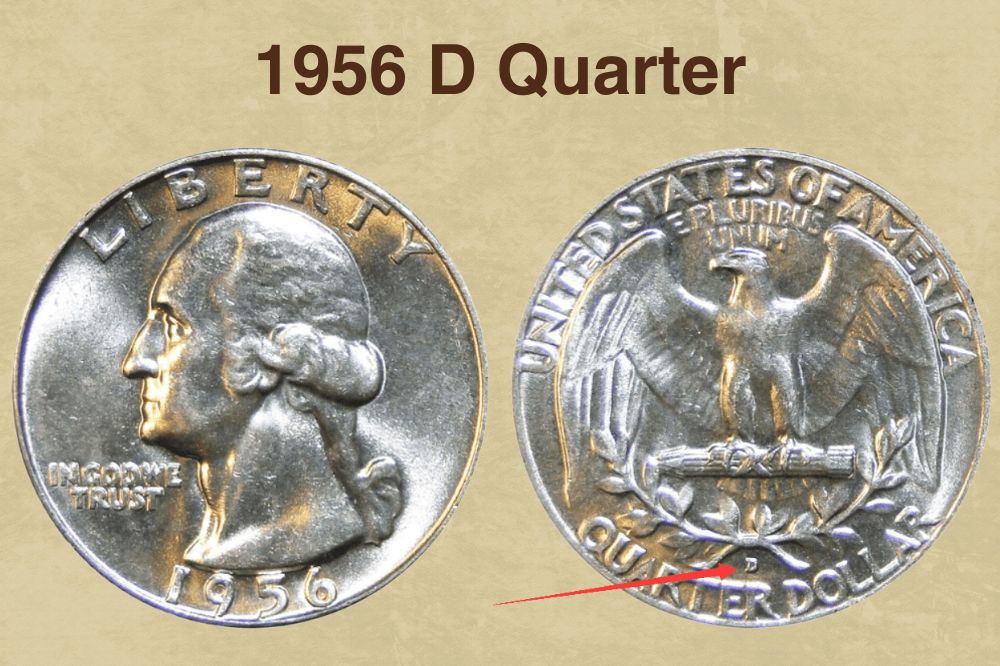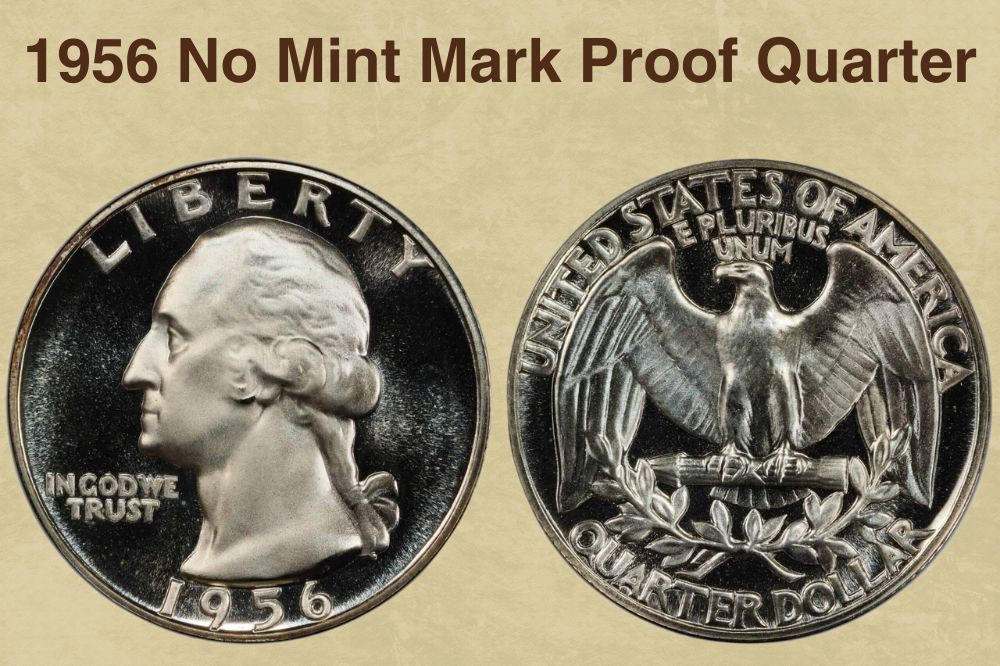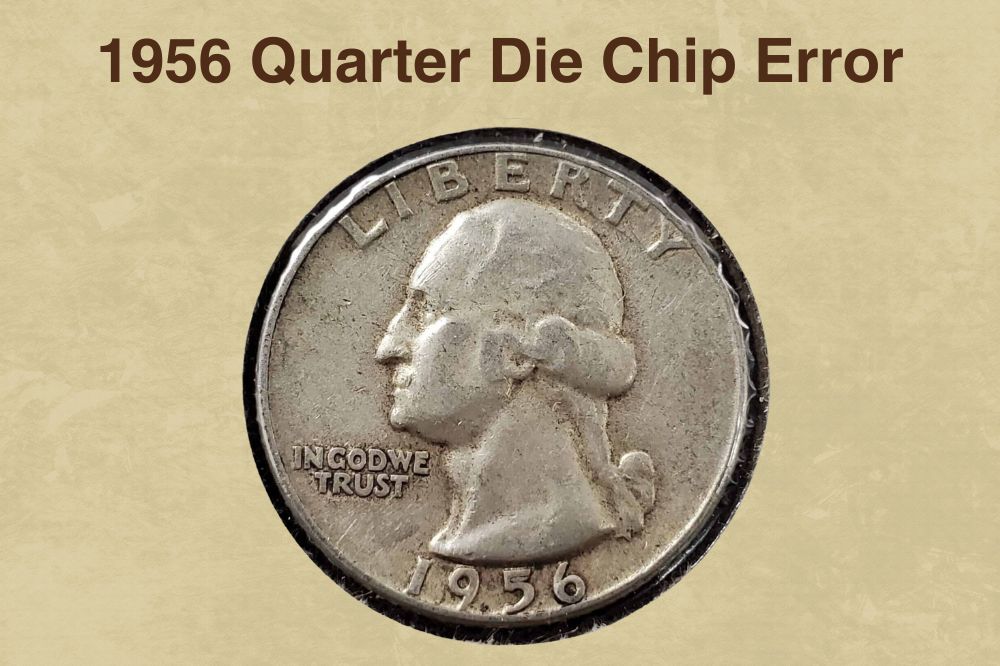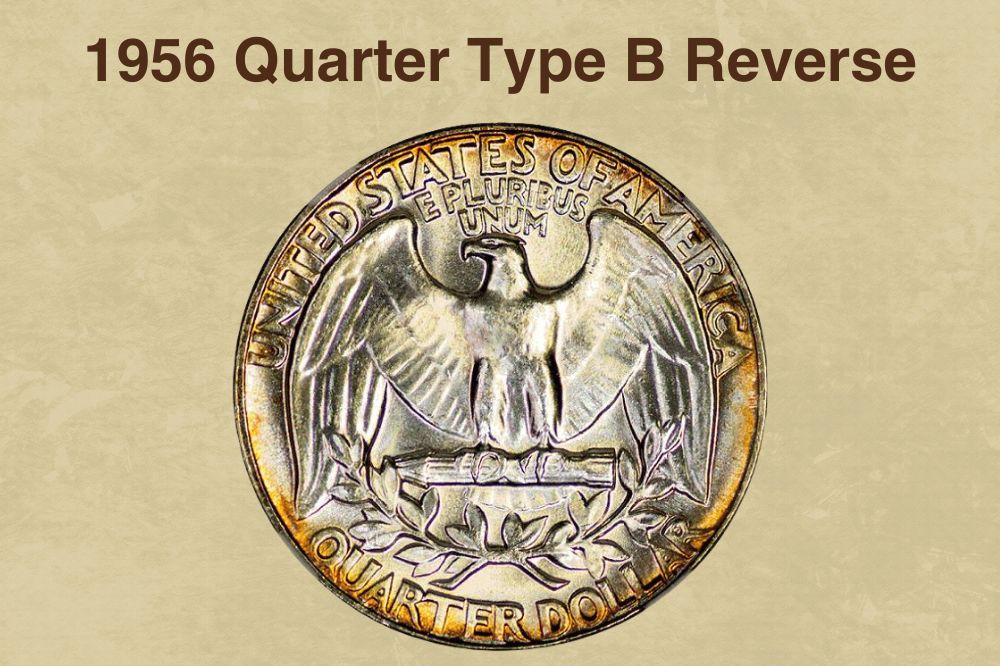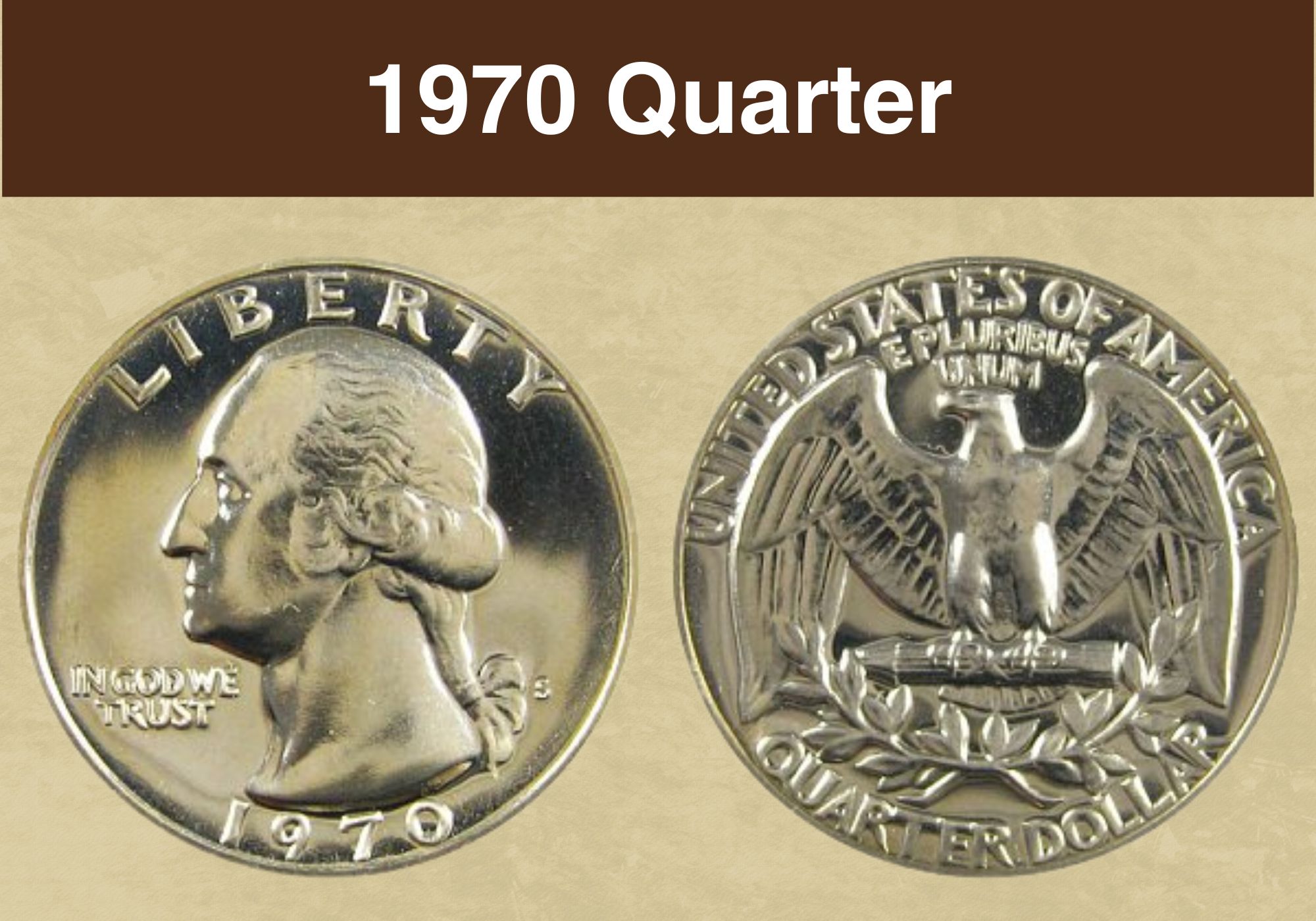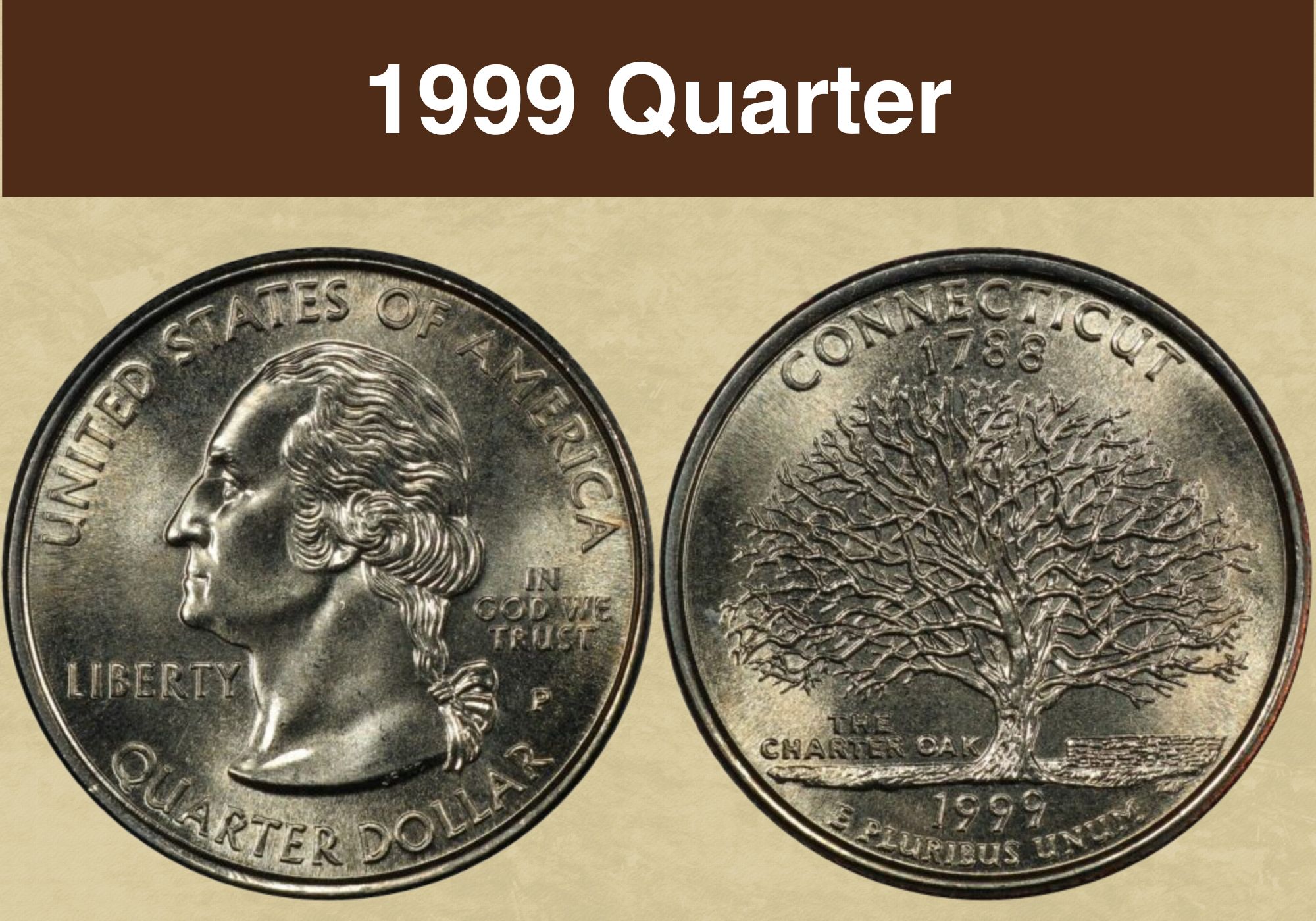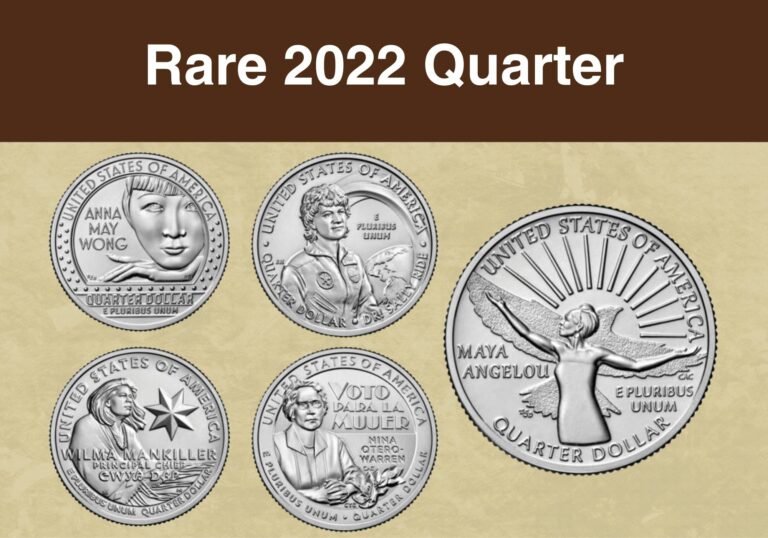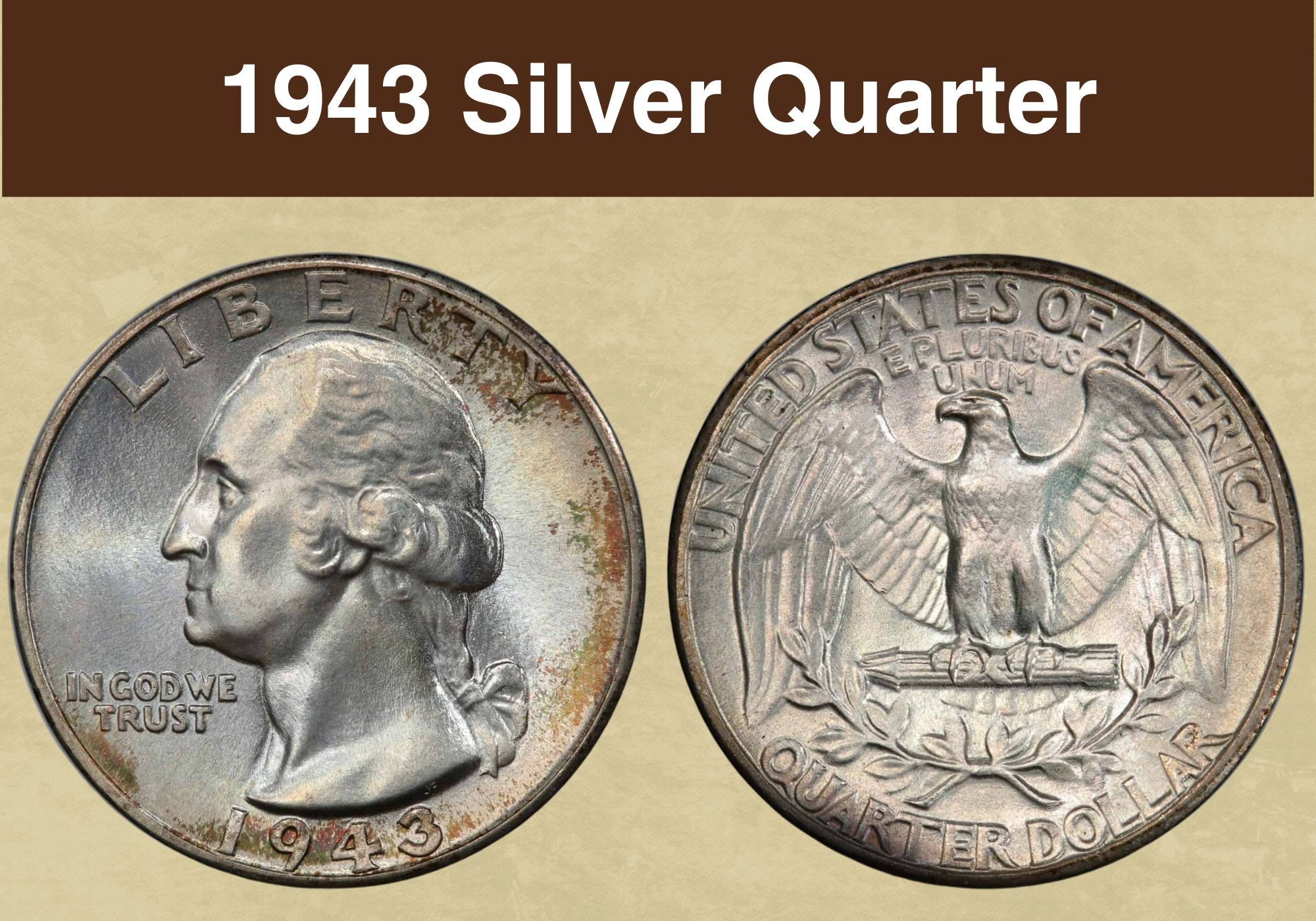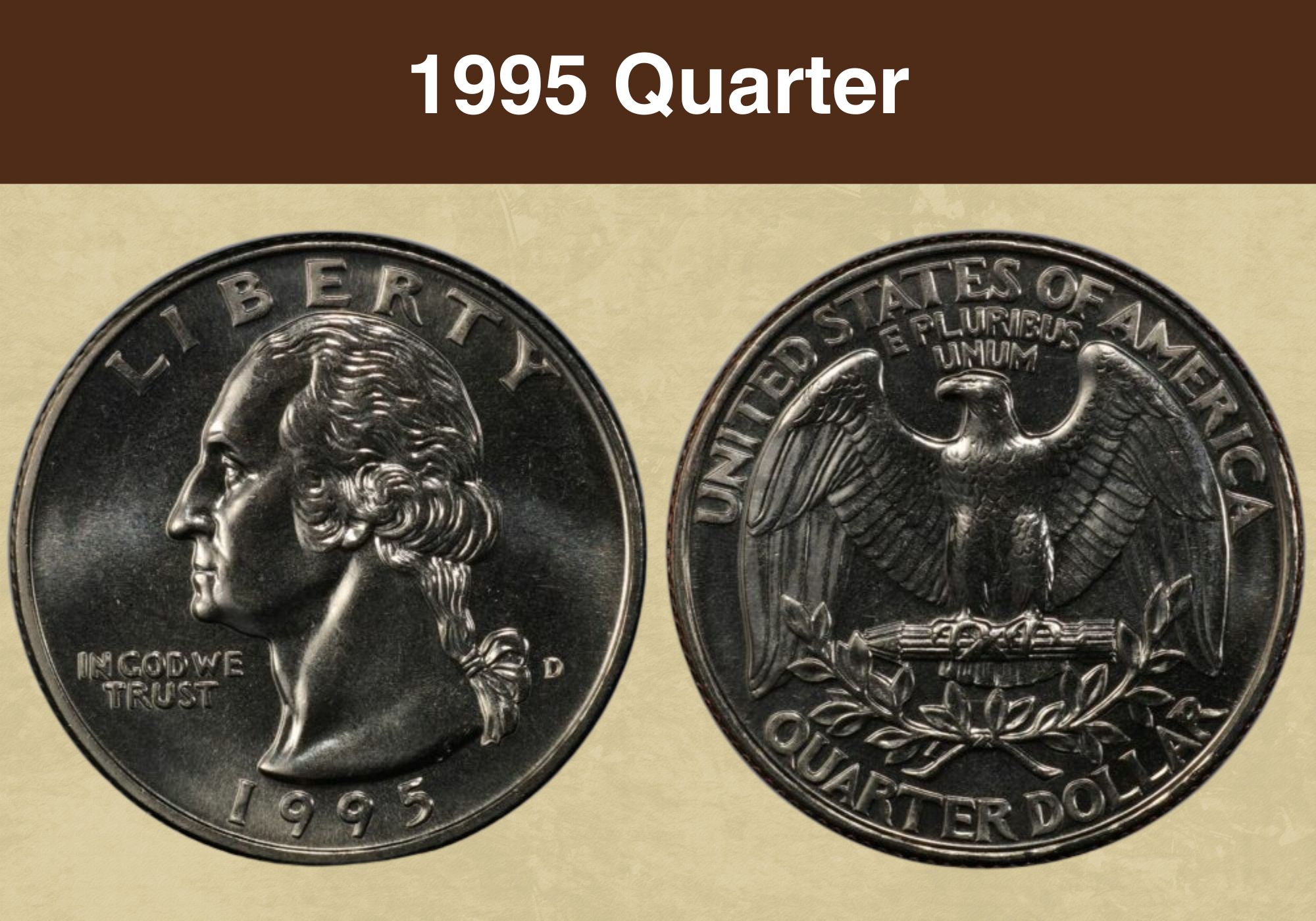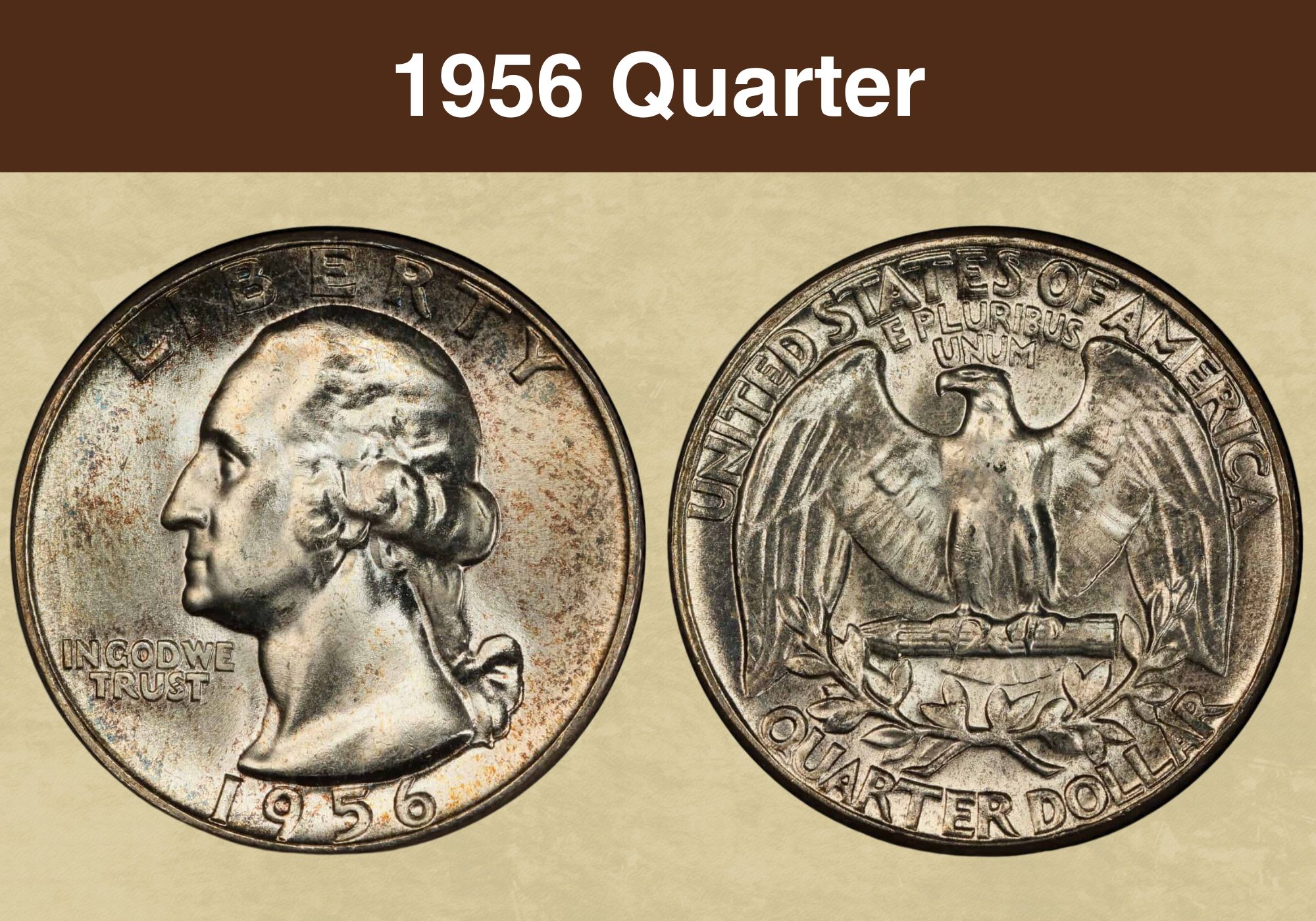
Coin Value Contents Table
The Washington Quarter is a long-running and beloved coin series. First minted in 1932, the series is still going strong today, with many interesting years along the way. One of those is the 1956 Quarter, which is a coin that many collectors love.
But exactly how much is the 1956 Quarter worth? Well, that’s what we’re going to find out here! As well as looking at its value, we’ll also look closer at the varieties of this coin along with any significant errors it has. Let’s get started!
1956 Quarter Value Chart
| Coin Grade | MS/PR60 | MS65/PR66 | MS67/PR69 | MS68/PR70 |
| 1956 No Mint Mark Quarter | $10 | $28 | $100 | $9000 |
| 1956 D Quarter | $10 | $32 | $525 | |
| 1956 No Mint Mark Proof Quarter | $8 | $28 | $160 |
1956 Quarter Grading
F2The grading of all coins, from all years, is the same. It works on a scale of 1 to 70, with 70 being the highest grade a coin can possibly get. 70 means that a coin is in perfect condition wear, with no signs of wear or damage, even under a microscope.
Before that number, you’ll either see ‘MS’ or ‘PR.’ The first stands for Mint State and is meant for coins that were designated for circulation. The second is Proof, which are coins made for collectors and was therefore never meant for circulation.
| # | Grade |
|---|---|
| 1 | Basal State-1 |
| 2 | Fair |
| 3 | Very Fair |
| 4, 5, 6 | Good |
| 7, 8, 10 | Very Good |
| 12, 15 | Fine |
| 20, 30 | Very Fine |
| 40 | Extremely Fine |
| 50 | About Uncirculated |
| 60 | Mint State |
| 65 | Mint State |
| 70 | Mint State |
Please check our grading guides to know your coin scale, It’s the necessary step to know the exact value of your coin.
Check out now: How to Grade Washington Quarter?
1956 Quarter Value By Mink Mark
The famous bald eagle reverse of the 1956 Washington Quarter was designed by John Flanagan, and this design was used until 1999. It was then replaced by the ’50 State’ quarters that were made to commemorate each state of the USA.
Back in 1956, only two mints struck this quarter, which were Philadelphia and Denver. Both of them produced a similar number of coins, with Philadelphia also being responsible for making the proof coins.
To know the 1956 Quarter value, we need to take a closer look at these varieties. Let’s start with 1956 No Mint Mark Quarter.
1956 No Mint Mark Quarter Value
Philadelphia was the first mint to open in the United States, and as it was the only one, they didn’t see the need to put a mint mark on their coins. If you have a coin from any year without a mint mark, then you know it’s from Philly.
Even as many other mints opened, this didn’t change until 1980 when they finally decided to mark their coins. With it being the original and largest mint in the country, it’s often responsible for making the most coins, and that is true for the 1956 Quarter.
They minted 44,144,000 of these coins, which means they aren’t very rare, even as they approach 70 years old. 1956 saw a boom in coin production due to an improved economy. You can find many in worn condition, and sadly, they won’t be worth any sigfnificant money.
While that’s true, you will be interested to know that any 1956 Quarter will be worth well above its face value. That’s because of what these coins are made from. 10% of them is copper, but the rest of the 90% is made from silver.
It’s partly due to this reason that you’ll no longer see these coins in circulation today, as they’ve either been collected or melted. The melt value for these silver coins is approximately $5 in today’s market.
You may now be wondering, what the coin’s condition needs to be for it to be worth more than its face value. The answer to this is around the AU50 grade. ‘AU’ stands for almost uncirculated, meaning the coin has very few defects.
For those wanting the highest valuations, your coins need to be in exceptional condition with almost no noticeable wear or damage. We find these coins commonly in an MS67 grade, but there are also rare examples to be found in MS68.
Having such high gradings in large quantities is unusual for such an old coin, but there will be a few key reasons for that. One of them is the large mintage for this year, with over 40 million being struck. The other is that people quickly kept hold of these coins due to their silver value.
For an MS67 coin, you can expect to receive around $100, with that jumping to $9000for an MS68 coin. The record at auction for the 1956 No Mint Mark Quarter is $4,560, which was for an MS67+ coin that had particularly beautiful coloring.
1956 D Quarter Value
As you’ve probably worked out, the 1956 D Quarter was struck in Denver. You can instantly spot this by looking for the mint mark. This is a small ‘D’ that is situated on the reverse of the coin, underneath the eagle, and just above the ‘R’ in ‘QUARTER DOLLAR.’
In general, Denver coins are more valuable than those from Philadelphia. There are two reasons for this, which are partly connected. Firstly, there were over 10 million fewer coins minted in Denver which accounts for roughly 25% less than in Philadelphia.
The second reason is that fewer of these coins have survived in mint state, making them even more scarce. With 32,334,500 coins made, they are still plentiful to find in MS67 but almost non-existent in MS68 grades.
This scarcity results in an MS67 Denver coin being worth around the same as an MS68 Philadelphia coin. If you ever managed to get your hands on an MS68 D coin, then it would no doubt be worth over $10,000.
At lower grade levels, these coins won’t be worth more than their melt value. It’s only around the MS65 point that you can start to get excited about its worth, especially if it has some interesting coloring.
The coloring isn’t something we have mentioned yet, but it can have a significant impact on the value of these coins. Silver will react with oxygen and chemicals over time, which can change its color. Sometimes these colors can be ugly, but others are beautiful.
Some silver coins will turn brown over time, and these coins aren’t worth very much at all. However, other silver coins will develop a multi-colored rainbow effect that looks stunning with an array of golds, pinks, purples, and greens.
These are the coins that have become most desired by collectors. It’s vital to note that this color has to be natural and develop over time. Many have tried to artificially create such coloring on coins, but this never works.
Such a coin sold for $8,519 at auction in 2016, with an MS67 grade. This specific coin had all the colors that we were talking about above, along with the perfect detailing that comes with a high grade.
1956 No Mint Mark Proof Quarter Value
By 1956 more proof coins were being made and sold to collectors. 669,384 were made in 1956 and therefore are easy to find in lower grades. However, lower-grade proof coins have very little value as not many collectors are interested in them.
Proof coins are meant to be the perfect examples of coins, and are also meant to be kept in perfect condition. Due to this, their value only comes from the very highest grades. Anything below PR66 is likely only worth a little over $28 at most.
There are plenty of these coins available in both PR69 and PR70 grades. If you have one in this condition, then you can expect a sale of over $160. The auction record was for a PR69 coin sold in 2014 for $3,819.
You may be wondering why a PR69 coin holds the auction record, and not a PR70. It comes down to the cameo. For proof coins, you want to have a contrast between the flat surface of the coin (the field) and the raised design of the coin (called the devices).
Due to how the die (the part that strikes the coin) was polished, the first proof coins have a mirror-like shiny field and a frosted device. This contrast is called a cameo, and if it’s particularly striking, it’s called a deep cameo.
If you want the highest value of the proof coin, then it needs to have a high grade along with an attractive cameo. Unfortunately, a deep cameo PR70 coin has never been auctioned, but if one was found, it would be extremely valuable.
Also read: Top 16 Most Valuable Modern Quarters Worth Money
Rare 1956 Quarter Error List
Coins from most years usually have several significant errors, which can be highly valuable to collectors. However, this isn’t true of the 1956 Quarter as there are only a few minor errors known, and they aren’t seen as having much of a premium price. Let’s check out what they are.
1. Die Chip
This is the only genuine error found in the 1956 Quarters. This is known as the ‘Double Bar 5,’ and it’s so-called as there appears to be a second line beneath the top line of the ‘5’ in the date. This is most likely due to the coin not being struck in this small area.
This is referred to as a ‘die chip’ error. That’s because it happens when a small piece of the die (the metal template that strikes the coin) breaks away. This leaves a slight gap in the image. These coins don’t hold a significant value but are often sold for around $50 if they are in excellent condition.
2. Type B Reverse
The ‘Type B Reverse’ isn’t an error as much, but a unique quirk in coins made at this time. Instead of discarding them, the mint decided that they’d use old proof dies to help coin production for regular business strike coins.
The reason was due to the higher production requirements and increased mintage. Many of these coins, however, look slightly different from others in their spacing. Most notably, there will be a bigger gap between the ‘E’ and ‘S’ in the word STATES than there is on regular coins.
Again, these coins don’t come with a high valuation, but you should be able to sell an MS60 coin for $30 or more.
3. Post Minting Damage
Many people love error coins, which can lead to two things. Firstly, sometimes someone will try to fake damage and claim that they have an error coin. Secondly, a coin may naturally get damaged throughout its lifetime.
Neither of these has any value. This is known as post-minting damage, and it’s important not to confuse it for genuine error coins. If you’re not sure whether the coin you have is a genuine error coin or not, it’s best to have it authenticated.
Also read: 17 Most Valuable Quarter Errors Worth Money
Where to Sell Your 1956 Quarter ?
Now that you know the value of your coins, do you know where to sell those coins online easily? Don’t worry, I’ve compiled a list of these sites, including their introduction, pros, and cons.
Check out now: Best Places To Sell Coins Online (Pros & Cons)
1956 Quarter Value – FAQs
1. How much is a 1956 quarter worth?
Anywhere from $8 to $10,000+! There is a wide range of factors that affect the value of a coin, but only a very few examples have significant worth. If you have a worn quarter from 1956, then it’s likely to only be worth its melt value.
That all changes if you have a coin in mint state of grades 60 or above. At the very highest levels of grading, these coins will be worth thousands of dollars. If you think you have a rare coin, then it’s always the best idea to have it authenticated.
2. Is there a rare 1956 quarter?
There isn’t one specific quarter from 1956 that is rare. The general business strikes were done in high quantities, and nearly 700,000 proof coins were made. The rarity from the 1956 Quarter comes from the condition they are in.
If you have a 1956 Quarter that has a bright luster, doesn’t have any damage, and has fine detailing, then you likely have a rare coin.
3. Does a 1956 quarter have silver?
Yes. All quarters until the mid-60s contain 90% silver, and this fact has helped their rarity. That’s because many people hoarded or melted down these coins for their silver value. Due to this, not many examples are left in perfect condition.
The price of silver changes all the time, but the melt value of a silver quarter is somewhere between $4-$5. So, your 1956 Quarter will be at least worth something!

